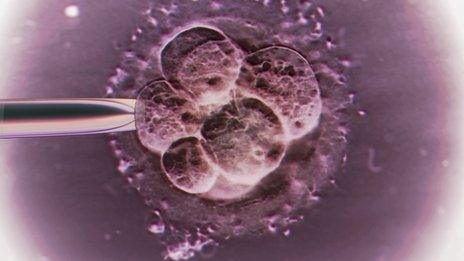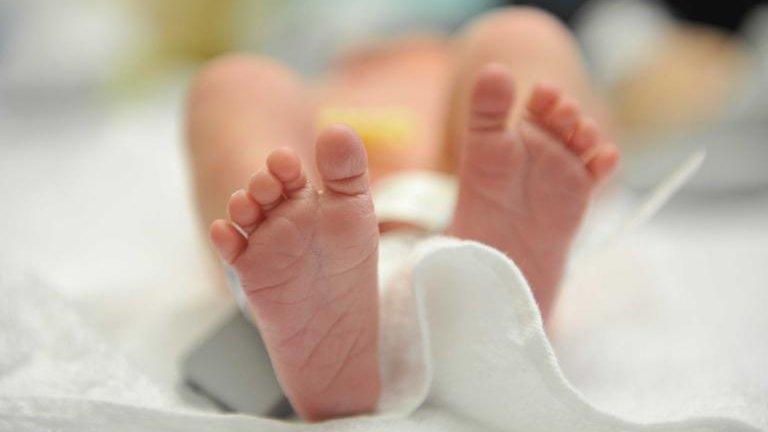Ethics of using three people's DNA to create one baby
- Published
- comments

Every so often a medical technique comes along of fundamental significance to medicine and society.
Transplantation and IVF are two examples. The first gave the chance of prolonged life to patients with failing organs. The second the chance of parenthood to couples with fertility problems.
Mitochondrial replacement might seem obscure by comparison. Unlike transplantation and fertility treatment, it would benefit very few couples. Those it could help would be able to have healthy children free of a potentially fatal genetic disease. Future generations of those families would also be free of the genetic fault.
But it also has huge potential significance for society because for the first time children would be born with DNA from three people - what has frequently been dubbed 'three-parent IVF'.
Crucially that genetic alteration to what's known as the germ line, would be permanent, handed down from generation to generation.
Lisa Jardine: "This decision may have consequences, many generations down the line"
That's why a consultation begun today by the Human Fertilisation and Embryology Authority (HFEA), external is so important.
My colleague James Gallagher has written about the techniques involved in mitochondrial replacement.
I will give just a brief explanation.
About one in 200 children is born with a fault in their mitochondria - these are the power packs outside the nucleus of each cell.
Most have mild or no symptoms but a minority suffer devastating effects which can include muscle weakness, neurological, visual and hearing disorders and heart disease. These can be progressive and fatal.
What's more that genetic fault is passed on down the generations, via the maternal line from mother to child.
Two years ago scientists in Newcastle reported, external that they could fix the problem through IVF technology.
The key was to replace the faulty mitochondrial DNA which they did by using the healthy mitochondrial DNA from a donated egg.
The resulting embryo contains all the genes from the nucleus of the parents (more than 20,000) plus a few dozen genes from the donated mitochondrial DNA.
The team, led by Prof Doug Turnbull, created 80 embryos but none was transplanted into a woman.
A scientific review last year concluded that there were no safety concerns which should prevent the technique from being used to help couples. But it recommended further research to explore the issues, which is currently under way in Newcastle.
Which leaves the ethical concerns. The technique raises many issues: what is the legal status of the woman who donates her DNA? How might any child that is born feel about having DNA from three people? When should they be told?
But this is not just an issue for the couples involved. For the first time it will mean that scientists are altering human genetic inheritance.
The addition of a tiny amount of DNA from a third person will be passed down the germ line - through the eggs - to subsequent generations.
Prof Lisa Jardine, the Chair of the HFEA said she expected some strongly-held views on the subject.
"This is an area that generates extreme opinions like almost no other issue except assisted dying. That is not a surprise since they are about taking and creating life."
Prof Jardine said that it would ultimately be up to the health secretary to rule on whether the technique should proceed to the clinic. This would not require an Act of Parliament but there would need to be a debate in both Houses of Parliament.
The consultation runs until 7 December and details can be found on the HFEA website., external
- Published17 September 2012
